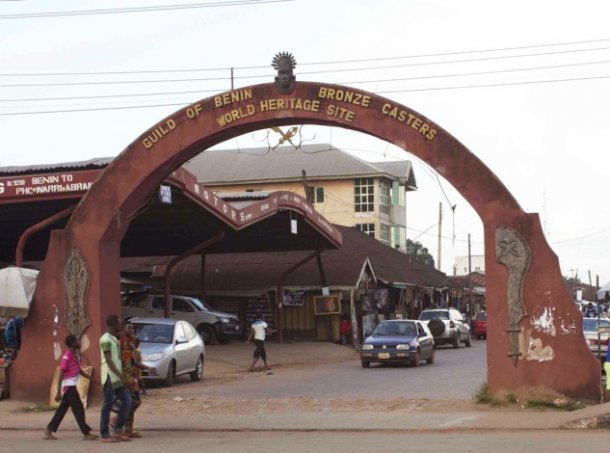Projecto artístico 'Whose Centenary?' reflecte sobre Arte e História da Nigéria
Published14 Mar 2015

“Whose Centenary?” é um projecto artístico colaborativo de dois anos, que teve a primeira apresentação pública na cidade de Benin, na Nigéria. O projecto parte da comemoração da união dos dois protectorados da Nigéria, Sul e Norte (que moldou o modelo de transição entre país colonizado e independente) e a comemoração da morte do monarca de Benin, Oba Ovonramwen. Jude Anogwih escreve na Contemporary and sobre as questões de reflexão desta iniciativa.
The festival consisted of all possible art forms – performance art, poetry, music, choreography, installation, painting, photography and video. Also at display were collaborations between academically trained artists, traditional Edo bronze casters and their wards in a series of community-based projects that provided platforms for diverse artistic processes.
Contrary to the slow pace of change in democratic governance in Africa, a revolution in contemporary art seems to have developed. A revolution, that extends the ideas of art beyond the boundaries, for which they were once known. Art has moved from conventional spaces, beyond the gallery into public spaces and unusual places. In the case of this festival, art and artists have moved into the local community. By working with established traditional bronze casters for which Benin is known, and working with them in their own spaces, an attempt has been made to redefine the boundaries of the museum spaces in Africa.
Through a creative lexis artists in Nigeria are dynamically responding to critical issues within their nationhood – issues, that are rooted in their own cultural understanding and environment. Adolphus Opara’s “Emissaries of An Iconic Religion”, Peju Layiwola’s “1897.com”, George Osodi’s “Nigerian Monarchs” and Victor Ehikhamenor’s “Entrances & Exits” are among notable examples.
Whose Centenary? set of with a collaborative performance between Wura-Natasha Ogunjiand Princess Elizabeth Olowu. The latter being the daughter of Edo king Oba Akenzua II, and the first female bronze artist in Nigeria. In their performance she adorned Ogunji according to royal Benin traditions in her own home. The performance alluded to the slavery era and the carting away of Africans to the West. Wura’s adornment by Olowu endorsed her as a member of the clan ‘Omosowa’, which means: a child has come back home. Her return was symbolically celebrated with songs and dances that told of the memories of former times. Another work, “No Answer”, by the well-known Nigerian poet Jumoke Verisimo, added an interrogation that focused on the core of a centenary celebration by Nigerians, when in fact the essences of their nationhood was somehow lost in exile.
Whose centenary is it? Art at the intersection of History in Nigeria
